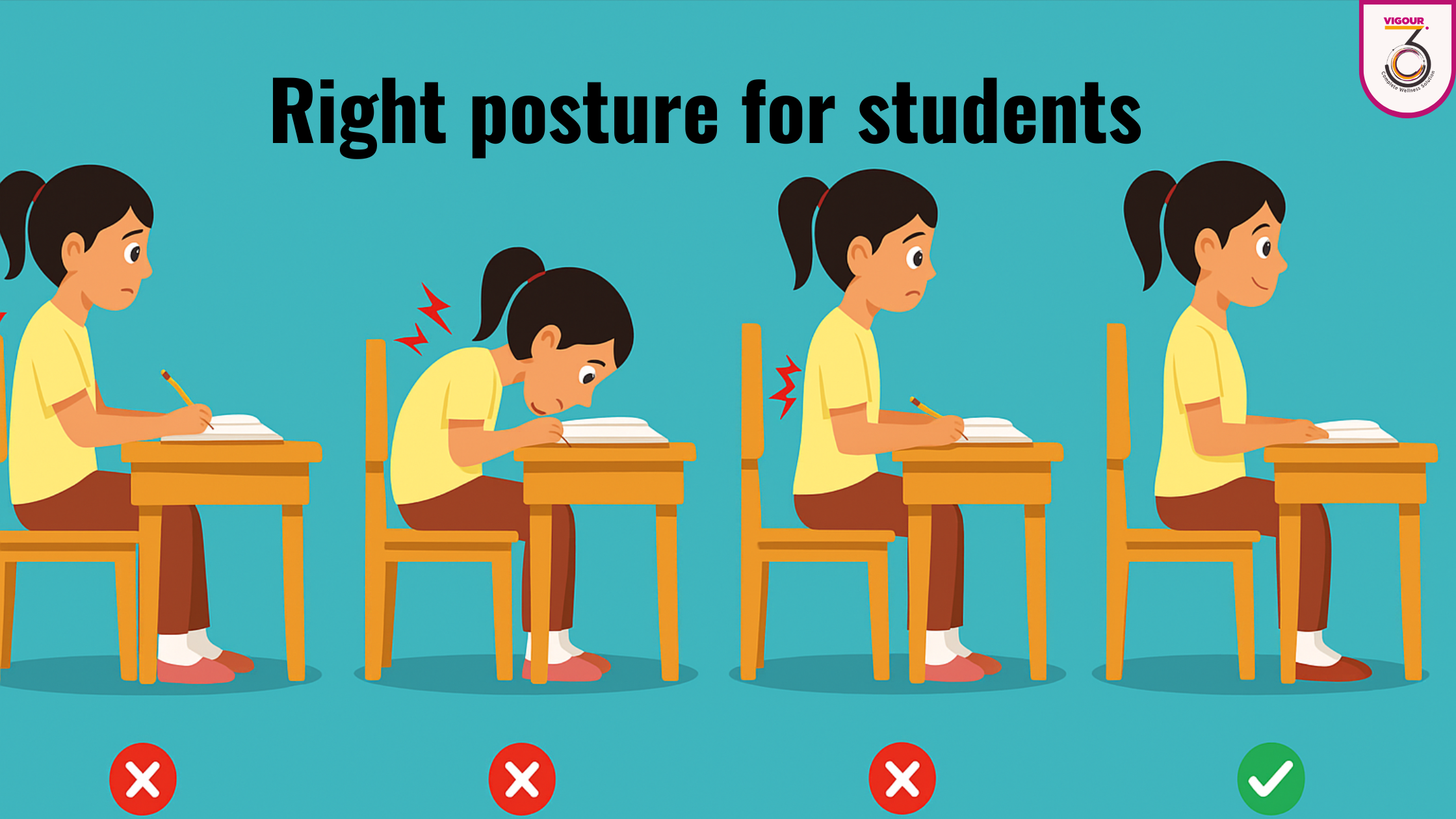
A good stance and posture reflect a perfect state of mind - Morihei Ueshiba. The cerebellum maintains posture and equilibrium in the body. It receives signals from the spinal cord and sensory nervous system and controls voluntary movements in the body.
Body posture is linked with a student’s focus, concentration and memory. Good posture helps to study for long hours without discomfort because of better muscular and physiological coordination. While bad posture is responsible for disorientation and lack of focus. In this article let's focus on right posture while studying.
Good posture is when you maintain the natural curves of your spine and minimise strain on your body. Maintaining good posture ensures that your body and spine stay properly aligned. When standing, your ears should align with your shoulders, spine, hips, and ankles. While sitting, both feet should rest flat on the floor, your core muscles (muscles in the abdomen and back) should stay engaged to keep your shoulders upright, and your body weight should be balanced equally across both hips.
Maintaining an upright posture positively impacts mood and energy levels by improving blood circulation and enhancing oxygen flow to the brain through better lung expansion and breathing. Research indicates that correct posture enhances concentration and supports cognitive function.
Students who maintain proper posture tend to appear more confident and experience reduced stress. Additionally, good posture has been shown to boost attention span, learning capacity, and memory retention, while also contributing to better mental well-being.
Poor posture negatively impacts multiple areas of the body. It not only contributes to musculoskeletal issues but also affects overall well-being. Incorrect posture places undue strain on the body, leading to a range of health problems.
Choose the right chair and desk. Customized chairs and desks with height adjustment can support the posture.
The chair should be such that it follows the natural curve of the spine. Height-adjustable desks can offer good support for both sitting and standing work.
Your shoulder and back should be upright, with your head holding straight.
Hips should touch the back of the chair. Feet are flat on the ground so that body weight is equally distributed.
Keep books or screens at eye level. While using a laptop, a mouse or keypad should be positioned comfortably.
Avoid sitting in the same position for long hours. Take regular breaks and stretch.
Practice short posture-correction exercises. Involve core muscles to support posture.
Avoid sitting with your head and shoulders hanging.
Do not bend your head while watching phones. Posture correction apps are helpful to remind you of posture from time to time.
Sleeping on the back or sleeping on your side with back straight can support the posture. Avoid sleeping on your stomach.
These are some simple tips for posture correction. Your body should feel comfortable while sitting or standing.
Following the right body posture throughout the day is necessary for optimal body function. A crooked posture can impact students’ self-esteem and confidence. Mental and emotional states frequently manifest through one’s posture. Therefore, maintaining and correcting posture improves learning outcomes for students.
Vigour360 offers comprehensive ergonomic assessments in schools to ensure students maintain healthy posture during daily activities. By evaluating classroom setups and student habits, we help prevent posture-related issues and promote long-term musculoskeletal health. Connect Now!
Comments (0)